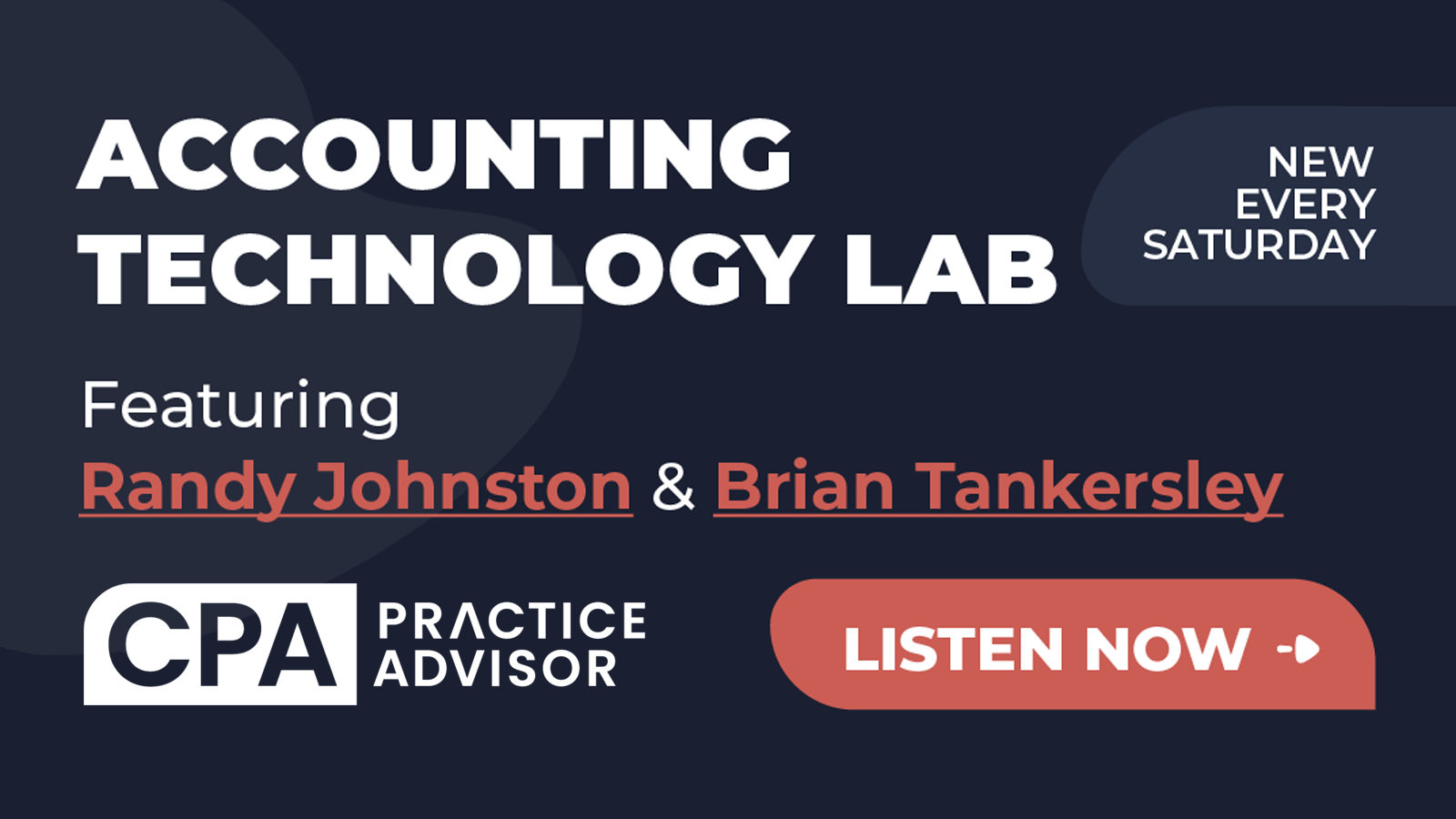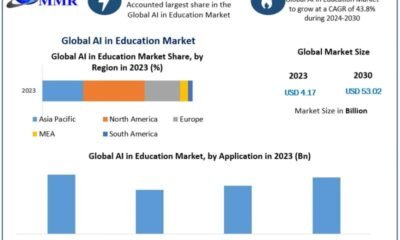AI Research
AI-Based Clinical Trial Solutions for Patient Matching Market

AI Based Clinical Trial Solutions for Patient Matching market was valued at approximately USD 300 million, and it is anticipated to grow to around USD 2.1 billion by 2033, representing a compound annual growth rate (CAGR) of about 22% between 2024 and 2033.
AI-Based Clinical Trial Solutions for Patient Matching Market Overview
The AI Based Clinical Trial Solutions for Patient Matching market is experiencing robust expansion as pharmaceutical companies and CROs increasingly rely on AI to speed up and streamline patient recruitment. Platforms powered by machine learning and natural language processing improve matching accuracy by analyzing vast datasets-such as electronic health records, genetic profiles, and clinical trial criteria-to identify eligible candidates faster. Real-time integration of heterogeneous data and AI-driven predictiveness enhance enrollment efficiency and trial success rates. Regulations and privacy safeguards remain pivotal as healthcare digitization advances. North America currently leads in adoption, but growth is accelerating globally, particularly in Asia Pacific and Europe. The rise of precision medicine and demand for faster, cost-effective trials underpin the market’s strong outlook through 2033.
Request a sample copy of this report at: https://www.omrglobal.com/request-sample/ai-based-clinical-trial-solutions-for-the-patient-matching-market
Advantages of requesting a Sample Copy of the Report:
1) To understand how our report can bring a difference to your business strategy
2) To understand the analysis and growth rate in your region
3) Graphical introduction of global as well as the regional analysis
4) Know the top key players in the market with their revenue analysis
5) SWOT analysis, PEST analysis, and Porter’s five force analysis
The report further explores the key business players along with their in-depth profiling
Patient recruitment, Personalized medicine, Drug development
AI-Based Clinical Trial Solutions for Patient Matching Market Segments:
◘ By Type: IBM Watson Health, Medidata, Parexel, Oracle, Covance, Veeva Systems, Phesi
◘ By Application: Predictive modeling, Genetic matching algorithms, Electronic health records integration
Report Drivers & Trends Analysis:
The report also discusses the factors driving and restraining market growth, as well as their specific impact on demand over the forecast period. Also highlighted in this report are growth factors, developments, trends, challenges, limitations, and growth opportunities. This section highlights emerging AI-Based Clinical Trial Solutions for Patient Matching Market trends and changing dynamics. Furthermore, the study provides a forward-looking perspective on various factors that are expected to boost the market’s overall growth.
Competitive Landscape Analysis:
In any market research analysis, the main field is competition. This section of the report provides a competitive scenario and portfolio of the AI-Based Clinical Trial Solutions for Patient MatchingMarket’s key players. Major and emerging market players are closely examined in terms of market share, gross margin, product portfolio, production, revenue, sales growth, and other significant factors. Furthermore, this information will assist players in studying critical strategies employed by market leaders in order to plan counterstrategies to gain a competitive advantage in the market.
Regional Outlook:
The following section of the report offers valuable insights into different regions and the key players operating within each of them. To assess the growth of a specific region or country, economic, social, environmental, technological, and political factors have been carefully considered. The section also provides readers with revenue and sales data for each region and country, gathered through comprehensive research. This information is intended to assist readers in determining the potential value of an investment in a particular region.
» North America (U.S., Canada, Mexico)
» Europe (Germany, U.K., France, Italy, Russia, Spain, Rest of Europe)
» Asia-Pacific (China, India, Japan, Singapore, Australia, New Zealand, Rest of APAC)
» South America (Brazil, Argentina, Rest of SA)
» Middle East & Africa (Turkey, Saudi Arabia, Iran, UAE, Africa, Rest of MEA)
If you have any special requirements, Request customization: https://www.omrglobal.com/report-customization/ai-based-clinical-trial-solutions-for-the-patient-matching-market
Key Benefits for Stakeholders:
⏩ The study represents a quantitative analysis of the present AI-Based Clinical Trial Solutions for Patient Matching Market trends, estimations, and dynamics of the market size from 2025 to 2032 to determine the most promising opportunities.
⏩ Porter’s five forces study emphasizes the importance of buyers and suppliers in assisting stakeholders to make profitable business decisions and expand their supplier-buyer network.
⏩ In-depth analysis, as well as the market size and segmentation, help you identify current AI-Based Clinical Trial Solutions for Patient Matching Market opportunities.
⏩ The largest countries in each region are mapped according to their revenue contribution to the market.
⏩ The AI-Based Clinical Trial Solutions for Patient Matching Market research report gives a thorough analysis of the current status of the AI-Based Clinical Trial Solutions for Patient Matching Market’s major players.
Key questions answered in the report:
➧What will the market development pace of the AI-Based Clinical Trial Solutions for Patient Matching Market?
➧What are the key factors driving the AI-Based Clinical Trial Solutions for Patient Matching Market?
➧Who are the key manufacturers in the market space?
➧ What are the market openings, market hazards,s and market outline of the AI-Based Clinical Trial Solutions for Patient Matching Market?
➧What are the sales, revenue, and price analysis of the top manufacturers of the AI-Based Clinical Trial Solutions for Patient Matching Market?
➧Who are the distributors, traders, and dealers of AI-Based Clinical Trial Solutions for Patient Matching Market?
➧What are the market opportunities and threats faced by the vendors in the AI-Based Clinical Trial Solutions for Patient Matching Market?
➧What are deals, income, and value examination by types and utilizations of the AI-Based Clinical Trial Solutions for Patient Matching Market?
➧What are deals, income, and value examination by areas of enterprises in the AI-Based Clinical Trial Solutions for Patient Matching Market?
Purchase Now Up to 25% Discount on This Premium Report: https://www.omrglobal.com/buy-now/ai-based-clinical-trial-solutions-for-the-patient-matching-market
Reasons To Buy The AI-Based Clinical Trial Solutions for Patient Matching Market Report:
➼ In-depth analysis of the market on the global and regional levels.
➼ Major changes in market dynamics and competitive landscape.
➼ Segmentation on the basis of type, application, geography, and others.
➼ Historical and future market research in terms of size, share growth, volume, and sales.
➼ Major changes and assessment in market dynamics and developments.
➼ Emerging key segments and regions
➼ Key business strategies by major market players and their key methods
Contact Us:
Mr. Anurag Tiwari
Email: anurag@omrglobal.com
Contact no: +91 780-304-0404
Website: www.omrglobal.com
Follow Us: LinkedIn | Twitter
About Orion Market Research
Orion Market Research (OMR) is a market research and consulting company known for its crisp and concise reports. The company is equipped with an experienced team of analysts and consultants. OMR offers quality syndicated research reports, customized research reports, consulting and other research-based services. The company also offers Digital Marketing services through its subsidiary OMR Digital and Software development and Consulting Services through another subsidiary Encanto Technologies.
This release was published on openPR.
AI Research
Overview of Blue J AI Tax Research – The Accounting Technology Lab Podcast – Sept. 2025

Transcript (Note: There may be typos due to automated transcription errors.)
SPEAKERS
Brian F. Tankersley, CPA.CITP, CGMA, Randy Johnston
Brian F. Tankersley, CPA.CITP, CGMA 00:00
Randy, welcome to the accounting Technology Lab, sponsored by CPA practice advisor, with your hosts, Randy Johnston and Brian Tankersley,
Randy Johnston 00:10
welcome to the accounting Technology Lab. I’m Randy Johnston with Brian Tankersley, or your co host, Brian and I have recorded prior podcasts about tax research, including on this product, Blue J. But there have been significant enough announcements in the recent months that we thought it was worth revisiting that. And probably a lead reason to revisit this is blue j just announced $122 million in series D financing that was led by oak H, CFT and Sapphire ventures, but it also included funding from intrepid Growth Partners, the previous investors, 10 coves capital and cpa.com and towards the end of our time together, we’ll talk to you about how purchasing Blue J through cpa.com can get you a discount. Now the good news is I did get to meet and interact with Benjamin Larry, the CEO and co founder of Blue Jay, earlier this year, and related to the funding, he basically said their commitment is a powerful endorsement of our vision to transform tax research with this capital and industry support will accelerate innovation and deliver even greater value to tax professionals. We are building the future of tax this is just the beginning. And Brian and I had a week before recording this podcast, asked for a technical demonstration of the platform, and that’s the reason we were actually going to talk to you about this product today, but with yesterday’s announcement, as it turns out, on August 4, I guess it was three days ago, sorry, on this funding that was kind of a big deal too. So Brian, way too much setup time, but I wanted to at least our faithful listeners to know that, yes, we knew we had talked about Blue J in the past, and we talked about a lot of the AI based tax research tools. Now, Blue J also has been around for 10 years. You know, they started in 2015 with machine learning, and we’ll talk about some of that as well,
Brian F. Tankersley, CPA.CITP, CGMA 02:21
but well, and they’re, and they’re pretty heavily in the legal field as well. And they’re doing UK, US, Canada and Australia, maybe, but, but they’re, they’re in multiple countries, and so, you know, again, that 120 2 million is a pretty impressive number, but they’re trying to solve a whole lot of different problems besides just tax so, so we have that in there. But, you know, this is, this is just kind of reminds me of the unit just to talk about, and to back up for a second and talk about the the investment environment that we’re in today, where we have multiple firms, multiple multiple startups and multiple companies like this that are taking on eight, nine figure sums of money to attack, to attack AI and to attack automation. And so, you know, again, we, you know, we, I think, when we did our outsourcing presentation last year and we talked quite a bit about outsourcing, I had that graphic of the bridge where it was, here’s where we are. Here’s where we think we’re going to go. And so this automation bridge that we talked about that was not that didn’t seem to come. And you and I kind of lamented, oh Lord, how long? Oh Lord, you know, do we have to wait? It seems like, it seems like the the software and the AI community have really come to come to play, and they’re throwing big numbers at the investments in the products,
Randy Johnston 03:47
yeah. And you know, when your CEO like Ben is chasing that down, you’ve got to have a solid product and strategy and so forth. So I respect that. And you know, we have had interactions in the past month or so with Christine Matus, head of the product marketing and Lindsay, Chief Marketing Officer, but this demonstration from Adam high Haynes, sorry, the VP of product that we did provided wonderful insight. So you know, one thing that we can claim on blue J is it’s answering tax questions really well. And we know that historically, a lot of practitioners are Googling for an answer, but they can’t attest to the primary information. And blue J is giving coherent responses to tax questions accurately. Now, I think part of the reason for that Brian is it’s grounded in source material, and that means it’s going to get good answers. But just to remind you of an AI attribute rag or retrieval, augmented generation. It was really the basis for the rapid improvements in Blue Jay. Remember, they were doing tax laws in Canada using machine language versus, you know, machine recognition, sorry, machine learning. Never mind. Randy today, machine learning, and it was quite good. So I think, Brian, you know, you’d ask a little bit about an example question that might be done. So do you want to pick that up for our listeners?
Brian F. Tankersley, CPA.CITP, CGMA 05:32
Sure, sure. So we actually had it. We actually asked it. Save some some more technical questions, like, again, in an asset acquisition, where the rules for allocating purchase price and basis, it actually goes out and cites the source documentation. It also includes links to the related primary sources. And so it’s, you know, they’re, they’re providing links to code, regs and and again, other other guidance that’s been provided by by both federal and state regulators. And so it’s, it is pretty impressive, the things that it, that it delivered,
Randy Johnston 06:12
yeah, and it turns out, you know, you and I have reviewed all six of the primary competitors in this space, and we’re aware of at least three more competitors that are trying to get products to market. So this is going to get crowded fairly quickly. But, you know, from there,
Brian F. Tankersley, CPA.CITP, CGMA 06:30
boy, it’s going to be, it’s going to be a hell of a wrestling match, though, you know, I think this is going to be an AI octagon where, where these people just try to beat the crud out of each other, like it’s UFC or something.
Randy Johnston 06:42
Yeah, I guess I hadn’t really thought about it like that, but yeah, it could wind up being that. Now, one thing that has been a North Star, I believe, for Blue Jay, is ease of use. And they believe that their net promoter score is high based on the ease of use. And while we were talking with Adam, we asked several questions about different approaches, but one of the examples of ease of use is the quick links to create an email. And, you know, down at the bottom of the prompting scream in Blue Jay, you basically have my prompts create a memo or create a client email, and those quick links will take the research that’s been done and draft that for you. Now, we did talk about the ARC of this product being around for 10 years, and the machine learning and how the early versions of gpts did not work. But they did discover when chat GPT three five was released, that it was the first time that the llms really worked. They had been working with the 3o and the three ones and concluded it just wasn’t ready. So the early, early users of blue J were very engaged, providing a lot of feedback, and the blue J development team incorporated those that feedback very quickly. They’re still doing it today. So this product is, you know, one of the grandfathers in the room, if you will. It was launched in June of 2023 with AI, even though they’ve been using that machine learning since 2015 So Brian, other background things before we just start calling out some of the other key features or things that we talked about with Adam.
Brian F. Tankersley, CPA.CITP, CGMA 08:32
Well, one of the one of the things that I would call out is that this is based on chat GPT, and that seems to be the most popular large language model, slash AI generative AI tool with most practitioners that we’ve seen, even though we’re seeing Claude be used more in in in enterprise businesses we’re seeing chat GPT still is kind of the practitioner’s favorite in many ways. And so this so the so the fact that this is based on the the chat GPT large language model means that the things you learn with how to prompt things in that product, or the things you learn about how to do prompts generally, are going to apply pretty much directly to Blue J and your use of it. Even though they, they’ve got, you know, they’ve got things to the again, they’ve they’ve got specialized things to to, to handle more complex things in it. So it is a customized version of this, and they are. They did have to make a significant number of tweaks to make it act the way they wanted it to and to provide the user experience. So it’s a, it’s a pretty interesting, interesting tool in here.
Randy Johnston 09:43
And you know to I will just say that Adam was very straightforward with us. We do have things under non disclosure, which obviously we would never share on a podcast like this. But it was amazing how many insights he provided this and then also deferred to his CT. When he said, you know that part you probably have to get from the CTO, but one arc, just because this comment may not age as well. Chat GPT, five is imminent, and you know how these products that are using open AI’s new generation platform will morph over time. My expectation is they will improve because of the increased number of tokens, the you know, better context that they can use. But I think we’ll have some of products that have been working well that’ll stumble for a little bit. That’s not their words. Mine on on any product using chat GPT in this new generation. So, you know, one of the first technical questions I asked was, big firms want to have API access. And, you know, Adam did disclose to us, and this is probably as close as we get to a roadmap item. You know, API access is coming in the intermediate term, they believe. And that makes sense. Almost every vendor is working on APIs now, APIs application program interfaces, this is the way that you can access data and move it from one system to another through pretty easy to use techniques. I do not know of a modern product that hasn’t exposed the APIs. And Adam did show us the APIs in the scheme and how that all worked, and that’s probably not important for this particular podcast, but it was clear to us that the access needed by most firms that want APIs will see that in the intermediate, using Adams word here. So then I ask, you know, another question, Brian. And my question was, why not prompts like some of the competitors have, like, you know, summarize a document or follow on questions and so forth. And I thought Adam’s response on that was pretty interesting, didn’t
Brian F. Tankersley, CPA.CITP, CGMA 12:07
you? Yeah, yeah. He, you know, he, he thought it was, he thought again, they were trying to, again, trying to go through here and and set up, set up some of the tools like this, you know, the, it’s a, I don’t know, the when we’re looking at at those, at those pieces, it lets you be a little more customized to what you want and describe a little closer what you want with it. They also had some problems where they would have two conversation threads and things would get messy, you know, remember, since it’s built on the chat GPT platform, you’re not going to get the exact same wording of responses every single time. And that’s, you know, but you will, but they have gone through and windowed it down so that you will get accurate responses,
Randy Johnston 12:58
yeah. And so, you know, the the word that he got to was messy, as Brian just laid out, and he said, Look, we’re trying to make this tool simple to use, and we’re trying to get people to go back to the primary conversation. And as Brian and I both know, from teaching so much AI, the more you push AI, the more tired it gets, and it just tends to get a little lazy and so forth. So I thought that was interesting. I also did ask about shared prompts by user, and again, that’s likely to occur here, but the accuracy on complex tax was also a pretty interesting response. So Brian again, knowing you have more tax and audit expertise than I did, I thought the interesting answer here was they focus on getting better tax answers, and that governs everything they do. And
Brian F. Tankersley, CPA.CITP, CGMA 13:55
as we’ve talked to Walter Stewart, cch and Thomson, Reuters and Bloomberg DNA, you know, that’s the hard thing to do here, and that’s why this. That’s why I wouldn’t that’s why I would be very, very careful if you’re trying to create your own chat GPT, your your own GPT for this, because there are some significant tweaks you have to make. Because I’ve, I’ve played with some of this, some of this kind of technology, with with primary sources. And, you know, if, if I think you’ve got to, I think you really want to use the technology and the filters and the tweaks that they’ve applied to this, because it’s really, they’re really applying this based on their experience, trying to make this tool do what they do. You know, an example of this that I think we talked about a little bit later was, you know, that actually incorporates the Internal Revenue manual into this document, and they, you know, and the that, what they said was that it’s, it’s hard sometimes to, you know, the thing they had to do is, they had to develop some of this context so that. You could know, okay, am I wanting to get primary sources, or am I wanting to know what? What am I doing? A procedural question, and need to go to IRM or, you know, what? What do I really need in this context? And that’s the real magic, the special sauce, as it were, that this, this really delivers, you know, because, again, they this is, you know, this is like being an airplane pilot, you know, you’re only as good as your last landing. And that’s the thing about that’s the thing about this is that they’re really focusing on trying to get everything accurately,
Randy Johnston 15:33
yeah, and the feedback they get from their customers is that they get the best tax answers on the market. And frankly, all of these research tools are doing well in this area, but you know where they’re currently using GTP, GPT four, one, they had to build some secret sauce to synthesize to get the right answers. And you know right now they’re using a context window of about 30 to 60k tokens. So it is fascinating to me what will happen with the product as the GPT based models work. But the key thing, I think, for our listeners, out of all the questions we ask is this is really intended to be a tax only product. They’re not trying to do client accounting services or audit research. They just want to do tax really well. And you push the point on payroll, which we’ll talk about in a minute. But you know, doing tax really well in Canada and the UK and the US and the jurisdictions they’re in is a big deal, but they’re
Brian F. Tankersley, CPA.CITP, CGMA 16:29
so this is different from the from the Thompson and Wk approaches that they do, that are going to run against, against both tax and audit and all of their research content, this is focused on tax only, so I want to just raise my hand and say that real quick, because it’s, I think it’s, I think it’s critical that you get this is that the Venn diagram of what it covers does not include Cavs and and a and a and, and, you know, gap gap guidance of any Kind.
Randy Johnston 17:00
Yeah. And you know, as we push that the UK coverage is pretty new. They just entered there in May of 2025, from accountex. And you then turned it, because I turned it to international, and you turned it to states. And I thought the answer there was fascinating, because they, they do have full state coverage, but they, I think his words were, they’ve been chipping away since the fourth quarter of 2024, this is no small problem. And, you know, in that context, then I think you went on to talk about local jurisdiction
Brian F. Tankersley, CPA.CITP, CGMA 17:33
tax, yeah, and I will say the states and the local you know, this is why 50 state payroll it. I refer to it as as it’s like Afghanistan in that. It’s where empires go to die. Because we can look at the amount of money that zero spent on trying to do payroll years ago, and it was, you know, 10s, if not hundreds of millions of dollars. And they got to, like, 23 states, and so the and some of those didn’t have income taxes, by the way, and the So, the thing about it here is that the taxability rules, and the the the what is taxed and how it’s taxed, and what’s taxable not taxable. And, you know, the the Byzantine regulation here, getting that right is is really hard, and that’s why they’ve been chipping away at it, you know, I don’t think they want to promise more than they can deliver at this point, but I think, you know, they said they’re pretty comfortable with with the output from it, and the stuff I saw looked pretty good,
Randy Johnston 18:31
yeah. And the other thing that I learned was that they were using Tax Notes for editorial commentary. I think I knew that from the past, but I kind of zoned it off and forgotten that. And the other thing that is always true with all applications, people use the product in creative ways. And because their users are experimenting with prompts, they’re starting to figure out that they can do some tax planning strategy and advisory services that way. So you know, those types of things, you know, will continue to evolve. I then went on to ask about a library prompts. And, you know, we talked about how that might play out. That’s so, you know, in terms of trying to make that play out, what would you say? Brian,
Brian F. Tankersley, CPA.CITP, CGMA 19:17
well, I mean, you know, I get that, you know, I think they’re offering some training and trying to help people out, learning how to do, learning how to go through and do prompts generally, is a it’s, it’s something you just have to throw time at. And that’s, in my mind, that’s one of the major the one of the major threats to AI adoption in accounting firms in particular, because everybody that’s senior in an accounting firm, you’re the ones that need to, that need to, need to be experimenting and trying things out. Okay? And so the problem is, when you have a habit of living life six or 15 minutes at a time for a time sheet, you don’t allow yourself anytime. Time to throw at, at something that may or may not work out. You get so focused on efficiency that you miss the whole effectiveness window, and so that that’s something where, that’s something where, you know, I would say, is bigger than just blue J with all the generative AI. I think you have to energetic AI and low code, no code. I think you have to throw some time at these things so you understand them, so you can manage them, even if you’re not going to be the person that creates the ones for your firm. I think you need to play with this stuff a little bit so that you can kind of understand conceptually what’s possible and what the processes look like. Again, you don’t have to be a programmer, just like, you know, Gary Boomer once said, you know, you know you don’t have to know how to you don’t have to know how to build a watch in order to be able to tell time. That’s true, but you probably need to understand what time is, and you need to understand you know enough about it and have enough experience that you can figure out what works, what does so
Randy Johnston 21:01
so, you know, we went on then to ask about settings and administrative announcements and the like, you know. So, Brian, you got into more of that.
Brian F. Tankersley, CPA.CITP, CGMA 21:11
Yeah. So, so again, they, they do have, they do cover quite a few different jurisdictions. They have light, dark view in there. So if you’re one of the, if you’re somebody that likes to work in a dark room, like I do sometimes, so that the light doesn’t blind me. It works out pretty good. They have English. They have English and French, all US tax treaties, the OECD treaties as well. They do some transaction excess to excess sales and personal tax so in Canada, they do excise. UK, they do VAT us. Title 26 gets a little more granular in there. They’re trying to focus on the currency of the data. Make sure things are updated and outdated. And so that kind of brought us over to to that that they do include the administrative announcements, but only to the extent that it comes through it comes through tax notes. Okay, so they’re trying to focus on the big things there, as opposed to the minutia of everything in the Federal Register.
Randy Johnston 22:09
And to your point there, Brian being updated daily and daily, removing outdated information was new learning for me on this platform. But you know, they do have some limitations of where they’re pulling this. But can you imagine all of this tax code daily getting updated in the process that’s behind it? We didn’t dig into that. I was just so stunned. I didn’t know how to ask the right question.
Brian F. Tankersley, CPA.CITP, CGMA 22:34
There’s such a leviathan. I mean, that’s just, you know, it’s, that’s the ultimate, you know, eating ultimate eating an elephant thing, you know, you think about, Okay, I’m going to update US federal, and now I’m going to update Canadian, Canadian federal and Canadian provinces, okay? And I can do that. And then I’m going to update UK, and now I’m going to update all 50 US states and territories. And you know, just, you know you’re you just run out of bandwidth at some point.
Randy Johnston 23:03
Yeah, if we saw a similar structure with the sales tax folks like Avalara, as they were trying to handle all those jurisdictions. But you know, now, if you get down to greater detail, things like the Internal Revenue manual, which is so huge, or the notices, or payroll tax coverage, you know, those things are all pretty big, and they’re working their way towards those. But you know, my caution, I think, right now is, you know, some of this we covered, some of it at the fringe will not be. And I know, Brian, you asked about payroll in specific.
Brian F. Tankersley, CPA.CITP, CGMA 23:37
Yeah, so in payroll, you know, you’ve got, with payroll, you’ve got all these, all these other regulations, like FMLA and, you know, the, you know, HIPAA, and all these other related regulations that you have to follow related to this. They don’t do that. Okay? They focus on things where there is a return and there is a payment and again. So they they cover food and Suda calculation and remittance rules and everything else like that, but they don’t cover the Unemployment Insurance regs. Okay? So I guess the way I’d say that is, if you become unemployed and you’re an employee and you’re eligible for unemployment, they don’t cover any of those rigs. Okay? They cover. They cover, again, the stuff related to the calculations, again, the stuff that the accountants are going to need. They are also, they talk. They told us quite a bit about privacy in here, they are running, they are running native instances of these in country for data centers, and that’s something critical in both the UK as well as as well as in as in Canada, because of regulations in those countries, okay, certain other information you wouldn’t want to share, you wouldn’t want to share outside of us, instance, just from a privacy perspective in there. But again, they’ve been through extensive vetting with large clients on the architecture, and they’ve passed through that. They also have a dedicated. Customer success team, they have a prompt guide book that they can share with folks that’s in the Help Center, and a number of videos and tutorials and other things to help people frame questions
Randy Johnston 25:11
well. So all of that said, as of today’s recording, the pricing is $1,498 per user per year, with a 10% discount through cpa.com your pricing may vary, you know, when you get ready to do negotiations. But Brian, any parting thoughts?
Brian F. Tankersley, CPA.CITP, CGMA 25:29
Yeah, see site for details and all that. But you know, I think it’s, I think this is a great product for, again, to use for tax research, and again, I think it’s, I think it’s interesting to have different sources that you try out, that you use different ways. And so I, you know, there’s there, like we said earlier, there are a lot of, there are a lot of folks trying to solve this AI and tax thing and the AI and accounting thing, and they’re going to be a lot of different approaches. And we, you know, we’re not going to get down to a five winner, six winners at this point. Okay, right now, there are, you said, what, five plus three that are out there, plus Walters, Kluwer and Thompson and all the others there. So, you know, there’s, there’s a lot, there are a lot of competitors in this space. But again for primary, for again, folks doing tax questions that want something that’s easy to use, similar to chat GPT, this may be the ticket for many of you.
Randy Johnston 26:31
Well, we appreciate you listening in again today, and we look forward to talking with you again soon in another accounting Technology Lab. Good day.
Brian F. Tankersley, CPA.CITP, CGMA 26:43
Thank you for sharing your time with us. We’ll be back next Saturday with a new episode of the technology lab from CPA practice advisor. Have a great week.
AI Research
California, New York could become first states to enact laws aiming to prevent catastrophic AI harm

This story is originally published by Stateline.
California and New York could become the first states to establish rules aiming to prevent the most advanced, large-scale artificial intelligence models — known as frontier AI models — from causing catastrophic harm involving dozens of casualties or billion-dollar damages.
The bill in California, which passed the state Senate earlier this year, would require large developers of frontier AI systems to implement and disclose certain safety protocols used by the company to mitigate the risk of incidents contributing to the deaths of 50 or more people or damages amounting to more than $1 billion.
The bill, which is under consideration in the state Assembly, would also require developers to create a frontier AI framework that includes best practices for using the models. Developers would have to publish a transparency report that discloses the risk assessments used while developing the model.
In June, New York state lawmakers approved a similar measure; Democratic Gov. Kathy Hochul has until the end of the year to decide whether to sign it into law.
Under the measure, before deploying a frontier AI model, large developers would be required to implement a safety policy to prevent the risk of critical harm — including the death or serious injury of more than 100 people or at least $1 billion in damages — caused or enabled by a frontier model through the creation or use of large-scale weapons systems or through AI committing criminal acts.
Frontier AI models are large-scale systems that exist at the forefront of artificial intelligence innovation. These models, such as OpenAI’s GPT-5, Google’s Gemini Ultra and others, are highly advanced and can perform a wide range of tasks by processing substantial amounts of data. These powerful models also have the potential to cause catastrophic harm.
California legislators last year attempted to pass stricter regulations on large developers to prevent the catastrophic harms of AI, but Democratic Gov. Gavin Newsom vetoed the bill. He said in his veto message that it would apply “stringent standards to even the most basic functions” of large AI systems. He wrote that small models could be “equally or even more dangerous” and worried about the bill curtailing innovation.
Over the following year, the Joint California Policy Working Group on AI Frontier Models wrote and published its report on how to approach frontier AI policy. The report emphasized the importance of empirical research, policy analyses and balance between the technology’s benefits and risks.
Tech developers and industry groups have opposed the bills in both states. Paul Lekas, the senior vice president of global public policy at the Software & Information Industry Association, wrote in an emailed statement to Stateline that California’s measure, while intended to promote responsible AI development, “is not the way to advance this goal, build trust in AI systems, and support consumer protection.”
The bill would create “an overly prescriptive and burdensome framework that risks stifling frontier model development without adequately improving safety,” he said, the same problems that led to last year’s veto. “The bill remains untethered to measurable standards, and its vague disclosure and reporting mandates create a new layer of operational burdens.”
NetChoice, a trade association of online businesses including Amazon, Google and Meta, sent a letter to Hochul in June, urging the governor to veto New York’s proposed legislation.
“While the goal of ensuring the safe development of artificial intelligence is laudable, this legislation is constructed in a way that would unfortunately undermine its very purpose, harming innovation, economic competitiveness, and the development of solutions to some of our most pressing problems, without effectively improving public safety,” wrote Patrick Hedger, the director of policy at NetChoice.
Stateline reporter Madyson Fitzgerald can be reached at mfitzgerald@stateline.org.
Stateline is part of States Newsroom, a nonprofit news network supported by grants and a coalition of donors as a 501c(3) public charity. Stateline maintains editorial independence. Contact Editor Scott S. Greenberger for questions: info@stateline.org.
AI Research
Commanders vs. Packers props, SportsLine Machine Learning Model AI picks: Jordan Love Over 223.5 passing yards

The NFL Week 2 schedule gets underway with a Thursday Night Football matchup between NFC playoff teams from a year ago. The Washington Commanders battle the Green Bay Packers beginning at 8:15 p.m. ET from Lambeau Field in Green Bay. Second-year quarterback Jayden Daniels led the Commanders to a 21-6 opening-day win over the New York Giants, completing 19 of 30 passes for 233 yards and one touchdown. Jordan Love, meanwhile, helped propel the Packers to a dominating 27-13 win over the Detroit Lions in Week 1. He completed 16 of 22 passes for 188 yards and two touchdowns.
NFL prop bettors will likely target the two young quarterbacks with NFL prop picks, in addition to proven playmakers like Terry McLaurin, Deebo Samuel and Josh Jacobs. Green Bay’s Jayden Reed has been dealing with a foot injury, but still managed to haul in a touchdown pass in the opener. The Packers enter as a 3.5-point favorite with Green Bay at -187 on the money line. The over/under is 48.5 points. Before betting any Commanders vs. Packers props for Thursday Night Football, you need to see the Commanders vs. Packers prop predictions powered by SportsLine’s Machine Learning Model AI.
Built using cutting-edge artificial intelligence and machine learning techniques by SportsLine’s Data Science team, AI Predictions and AI Ratings are generated for each player prop.
For Packers vs. Commanders NFL betting on Monday Night Football, the Machine Learning Model has evaluated the NFL player prop odds and provided Bears vs. Vikings prop picks. You can only see the Machine Learning Model player prop predictions for Washington vs. Green Bay here.
Top NFL player prop bets for Commanders vs. Packers
After analyzing the Commanders vs. Packers props and examining the dozens of NFL player prop markets, the SportsLine’s Machine Learning Model says Packers quarterback Love goes Over 223.5 passing yards (-112 at FanDuel). Love passed for 224 or more yards in eight games a year ago, despite an injury-filled season. In 15 regular-season games in 2024, he completed 63.1% of his passes for 3,389 yards and 25 touchdowns with 11 interceptions.
In a 30-13 win over the Seattle Seahawks on Dec. 15, he completed 20 of 27 passes for 229 yards and two touchdowns. Love completed 21 of 28 passes for 274 yards and two scores in a 30-17 victory over the Miami Dolphins on Nov. 28. The model projects Love to pass for 259.5 yards, giving this prop bet a 4.5 rating out of 5. See more NFL props here, and new users can also target the FanDuel promo code, which offers new users $300 in bonus bets if their first $5 bet wins:
How to make NFL player prop bets for Washington vs. Green Bay
In addition, the SportsLine Machine Learning Model says another star sails past his total and has nine additional NFL props that are rated four stars or better. You need to see the Machine Learning Model analysis before making any Commanders vs. Packers prop bets for Thursday Night Football.
Which Commanders vs. Packers prop bets should you target for Thursday Night Football? Visit SportsLine now to see the top Commanders vs. Packers props, all from the SportsLine Machine Learning Model.
-

 Business2 weeks ago
Business2 weeks agoThe Guardian view on Trump and the Fed: independence is no substitute for accountability | Editorial
-
Tools & Platforms1 month ago
Building Trust in Military AI Starts with Opening the Black Box – War on the Rocks
-

 Ethics & Policy2 months ago
Ethics & Policy2 months agoSDAIA Supports Saudi Arabia’s Leadership in Shaping Global AI Ethics, Policy, and Research – وكالة الأنباء السعودية
-

 Events & Conferences4 months ago
Events & Conferences4 months agoJourney to 1000 models: Scaling Instagram’s recommendation system
-

 Jobs & Careers2 months ago
Jobs & Careers2 months agoMumbai-based Perplexity Alternative Has 60k+ Users Without Funding
-

 Podcasts & Talks2 months ago
Podcasts & Talks2 months agoHappy 4th of July! 🎆 Made with Veo 3 in Gemini
-

 Education2 months ago
Education2 months agoVEX Robotics launches AI-powered classroom robotics system
-

 Education2 months ago
Education2 months agoMacron says UK and France have duty to tackle illegal migration ‘with humanity, solidarity and firmness’ – UK politics live | Politics
-

 Funding & Business2 months ago
Funding & Business2 months agoKayak and Expedia race to build AI travel agents that turn social posts into itineraries
-

 Podcasts & Talks2 months ago
Podcasts & Talks2 months agoOpenAI 🤝 @teamganassi



















